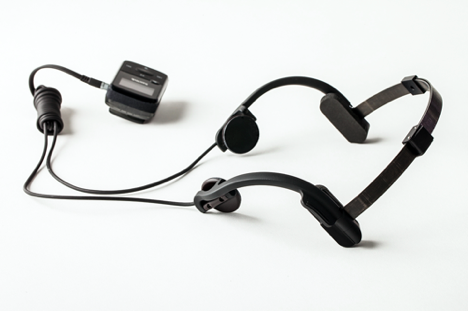Study uncovers the impact of Mechanical Affective Touch Therapy on brain connectivity, its relationship with anxiety disorders

In a new study, a team of Brown University researchers affiliated with the Carney Institute for Brain Science is the first to examine the impact of Mechanical Affective Touch Therapy (MATT), a non-invasive form of peripheral nerve stimulation which can be used to treat anxiety disorders.
Anxiety disorders affect nearly 20% of adults in the United States on an annual basis. According to the study, however, many patients who receive standard treatment for anxiety disorders experience inadequate improvement to their symptoms, underscoring a need for additional anxiety disorder treatments. One possible alternative is MATT, but little is known about its effect on psychiatric symptoms and their underlying cortical mechanisms.
The new study published in the journal Neuromodulation: Technology at the Neural Interface examines the impact of MATT on brain connectivity during a resting state and its relationship with anxiety disorders.
“While first-line treatments – antidepressants and psychotherapies – are effective treatments for anxiety, about one-third of patients live with clinically significant symptoms that don't respond adequately to treatment,” said senior author Jennifer Barredo, assistant professor of psychiatry and human behavior at Brown. “MATT is a wearable device that delivers gentle vibratory stimulation to the skin intended to induce a relaxed state that might help reduce anxiety. This form of treatment might be more acceptable to those that can't tolerate, or don't wish to take antidepressants.”
The study was based on a clinical trial of an investigational device headed by primary investigator Linda Carpenter M.D., Professor of Psychiatry and Human Behavior at Brown, member of the Carney Institute’s Executive Committee and director of the Butler Hospital TMS Clinic and Neuromodulation Research Facility. The goals of the trial were to evaluate preliminary efficacy, safety, feasibility and neural biomarkers – using electroencephalography (EEG) and functional magnetic resonance imaging (fMRI) – associated with a new type of stimulation developed to treat anxiety, said Carpenter. The stimulation is delivered by wearing the MATT device, which looks like a simple headset with small pieces that vibrate against the skin behind each ear.
The clinical trial included a sample of 22 adult participants with anxiety disorders that were reviewed and confirmed by the research staff at the beginning of the trial. The research staff assisted with the first two initial sessions of MATT, after which the participants self-administered MATT at home at least twice a day for four weeks. Resting-state fMRI was collected before the initial MATT session, immediately following the first session, and after four weeks of MATT.
The researchers observed changes in the synchrony between brain regions involved in processing pain and emotion with those engaged in internal mentation following the MATT treatment course. They also found that baseline connectivity between certain brain regions was predictive of symptom improvements following the four-week treatment of MATT.
“Establishing a potential underlying mechanism of action via resting state functional connectivity was both exciting and daunting,” said first author Meghan Gonsalves, a Ph.D. candidate in Brown’s Neuroscience Graduate Program who also holds bachelor’s and master’s degrees from Brown. “Our findings need to be validated via a randomized control trial, but are nonetheless a fantastic first step in better understanding how mechanical stimulation is associated with functionally connected brain networks in individuals with anxiety disorders.”
According to the researchers, their findings could have a positive impact on development of a new anxiety treatment. “We hope these preliminary findings demonstrate the potential of newer, non-traditional forms of neuromodulation treatments for anxiety, especially for the development of devices that can be safely used at home,” Barredo said. “That seems especially useful as we enter another winter of Covid-19.”
As a next step, the researchers said the developer of the MATT device, AffectNeuro, Inc., will likely conduct large-scale randomized trials and seek regulatory approvals, if successful.
Collection of the data was primarily supported by AffectNeuro, Inc., through a clinical trial contract with Butler Hospital. Effort of Dr. Barredo was supported in part by a grant from VA Clinical Science Research and Development (IK2 CX001824). Research reported in this publication was facilitated by the National Institute of General Medical Sciences of the National Institutes of Health under P20GM130452 (Core Resources of the Butler Hospital COBRE Center for Neuromodulation).



